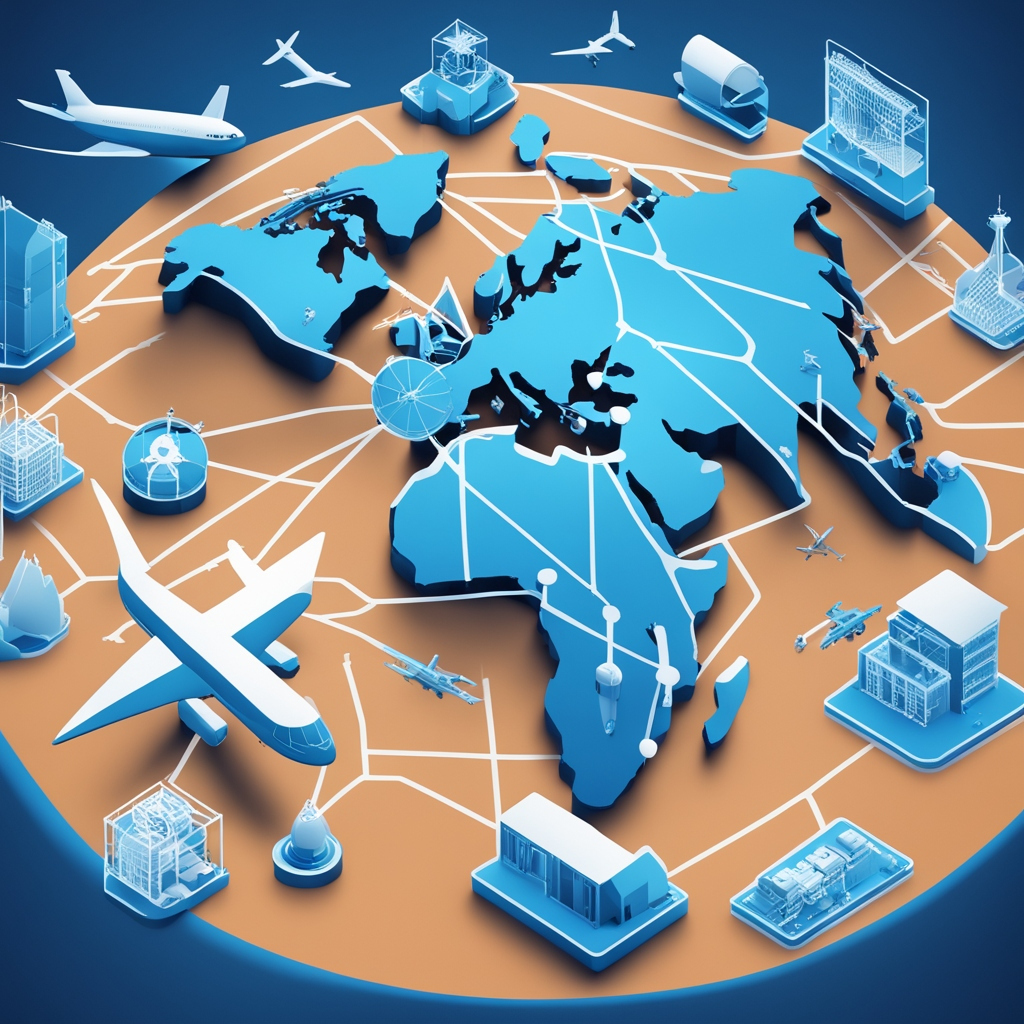May 16, 2024
Total supply chain visibility
Many supply chain managers and operators know very little about their chain. Even the most mature organizations have true real-time visibility into just small portions of their chain.
Moreover, 84% of chief supply chain managers cite lack of visibility along the supply chain as the biggest pain point. But what does supply chain visibility really mean? How can shipment control be achieved? How do supply chain managers adopt strategies to monitor logistics and transportation activities?
Track and trace solutions: what benefits do they bring?
Supply chain visibility is about obtaining on-demand, real-time information about the status, condition, and location of products, materials, and inventory anywhere in the world and at any point along the supply chain route.
It is therefore obvious that when a supply chain manager needs to adopt strategies to monitor transportation activities in order to know exactly what state the goods are in, they must refer to the visibility paradigm and all those track and trace solutions for universal tracking and shipment control.
However, in order to achieve the goals listed above, supply chain managers increasingly need to lean on technology solutions that can guide them in the world of data, which increasingly assume a crucial role in globalized supply chains and are gradually becoming an integral part of the new digital approach promoted by globally prominent institutions.
That is why there is a need for digital solutions that quickly provide all the data needed to execute operational tasks in a single cloud platform.
These digital technologies, including track and trace solutions, enable companies that adopt them to achieve a number of benefits:
- Increased productivity: from production lines to delivery to the end customer, there is an across-the-board increase in productivity;
- Cost reduction: knowing logistics flows to perfection is essential for implementing improved processes and optimizing operations. All this results in the reduction of logistics costs;
- Increased competitiveness: companies that have a dynamic, fully monitored logistics flow with the lowest possible error rate are more competitive and ultimately can expand and successfully explore new markets;
- Data Optimization: as a consequence of data unification, simplification and normalization, accessibility of information flows is easier and faster;
- Customer retention: an optimal level of service and a fully satisfactory customer experience function as a differentiator and contribute substantially to building trust with customers.
Talk to an expert
Top technologies for optimal track and trace
These benefits are within reach for all companies moving in the direction of innovative technologies.
For example, if a supply chain manager is tasked with adopting strategies to monitor transportation activities and needs to view temperature/humidity data from his shipment (or even in warehouse logistics steps) in a single environment, he needs to know about the different technologies that enable different solutions and applications that can enable business objectives. Typically, market trends prompt technology departments to suggest that supply chain managers move toward solutions that unify all the data needed to execute operational activities in a single cloud platform.
So if innovative solutions for optimal track and trace are the key to the progressive digitization process of companies, then it is necessary to show how this process relies on some essential innovative technologies – including Internet of Things (IoT), Data Analytics, Artificial Intelligence (AI) and Machine Learning (ML).
By taking the topic of Artificial Intelligence down to the supply chain world, we can see applications that enable companies to take important steps toward the automation of data and processes in the supply chain.
For example, thanks to different Machine Learning models, greater autonomy can be brought to processes that used to be done manually: in fact, there is software that can automate data management and sharing processes, manage unpredictable phenomena such as traffic intensity at a point in time after analysis, determine the optimal timing for an unloading operation or the ideal amount of warehouse stock.
Also, there are some branches of Artificial Intelligence such as Natural Language Recognition or Optical Character Recognition that enable companies to take important steps toward supply chain automation.
In the case of IoT, we are talking about data loggers and other field devices that enable universal tracking and shipment control on multiple levels, often in real time, transmitting a range of essential data and information - including location, temperature, humidity, etc. - to the smooth flow of product through the supply chain
When it comes to Data Analytics, one must analyze the issue piece by piece: when the amount of data processed is massive, as is often the case in the supply chain, one must adopt a set of the massive data analytics technologies and methodologies, which have the ability to extrapolate, analyze and relate a huge amount of heterogeneous data to uncover links between different phenomena and predict future ones. Analytics are algorithms, technologies and software implemented to study and find correlations between data. The combination of Data and Analytics creates a completely different tool with enormous potential, Data Analytics: these are technologies and software applied to the study and search for connections and relationships between Big Data, and capable of extracting new information and creating new forms of value.
Conclusions
The future of supply chain visibility is about gathering granular information about both products and processes, sharing this information with the right stakeholders at the right time, the ability to make meaning of the information gathered, and finally, the ability to put value on this information.
A solution that provides reliable information about the status of your goods in real-time, and that is enhanced by the innovative technologies investigated above and the ability to collaborate and network across the entire supply chain, can provide total visibility and unprecedented improvements in economic and operational performance.
